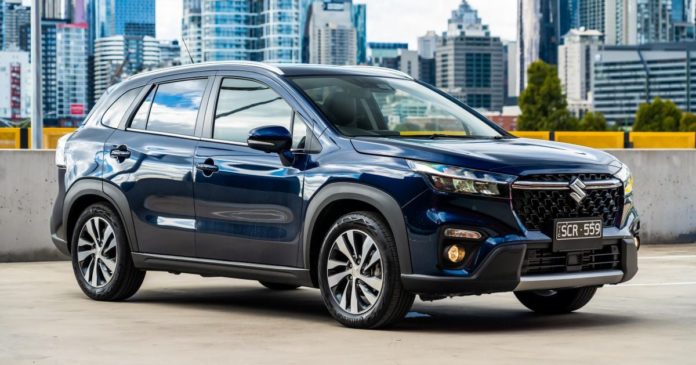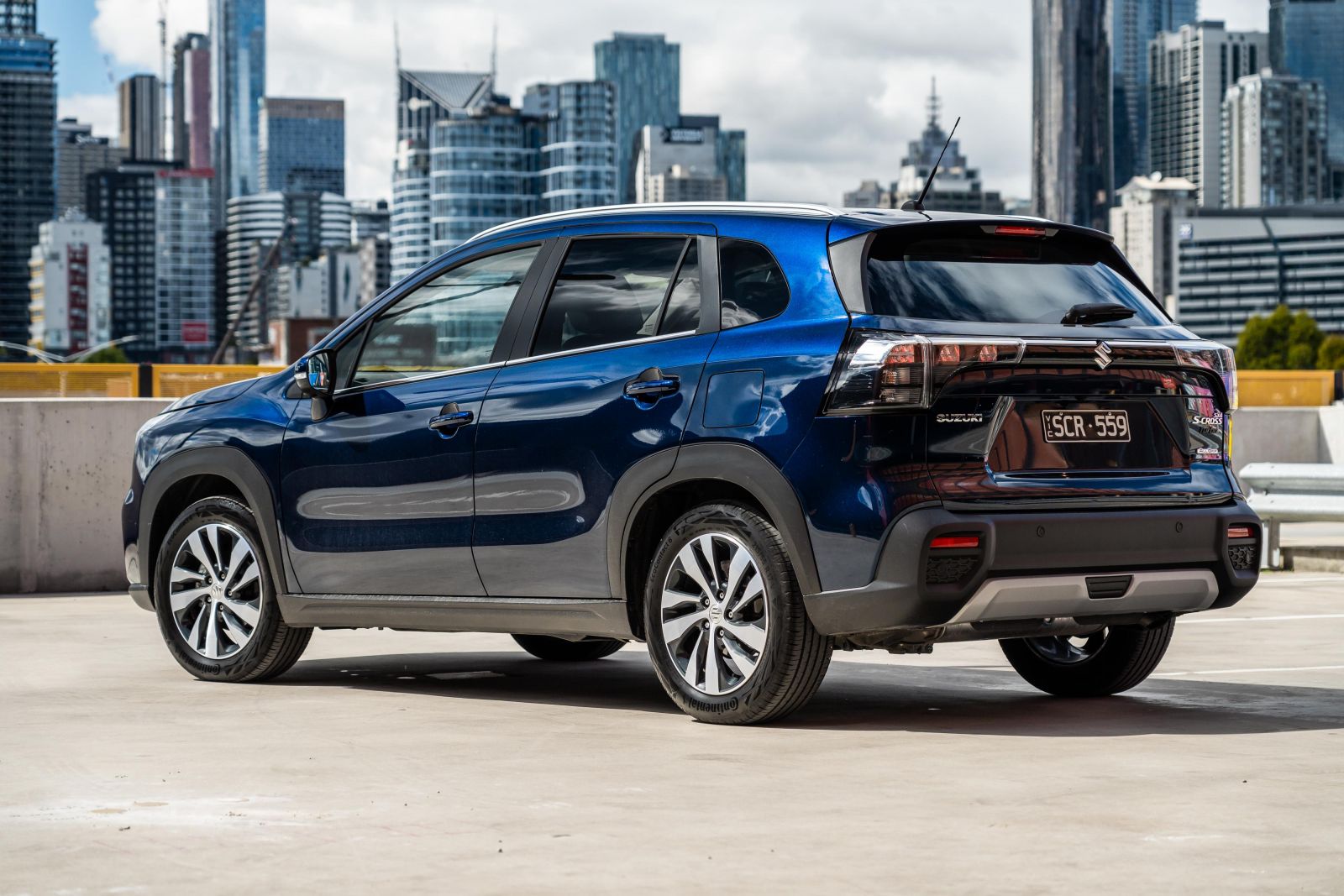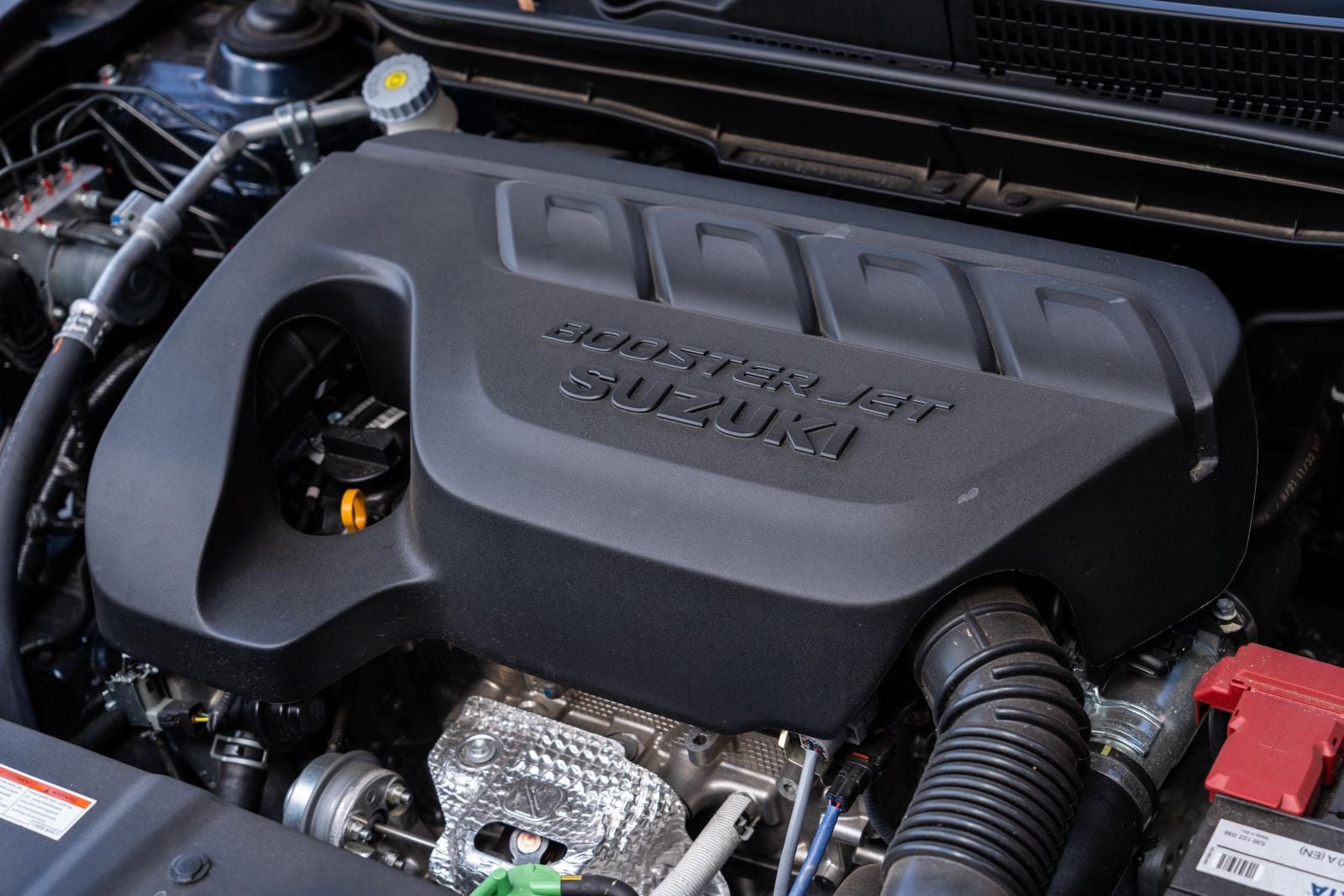The Suzuki S-Cross is the Japanese car maker’s flagship, and while not an all-new generation for 2023, it has received a substantial facelift to give it a new lease on life in the small SUV segment – one of the most competitive in Australia.
While the first generation of the S-Cross – also known as the SX4 – was designed by Italdesign and Giorgetto Giugiaro, the same team responsible for the Ferrari 250 GT and plenty of Maserati and even Lotus vehicles, the third-generation we have here is an in-house job by Chris Ciano and Yuta Horiuchi.
The good news is the new S-Cross looks the business, with an ultra-modern design that takes some elements from the Germans (think BMW front) and the French (we see Peugeot 3008 at the rear) to give it a sophisticated and modern look.
The interior has also been substantially modernised with the latest technology and infotainment systems. But does it stack up against the its compatriots from Japan and formidable competitors from South Korea?
How much does the Suzuki S-Cross AllGrip Prestige cost?
The 2023 Suzuki S-Cross range starts at $40,990 before on-road costs for the base AllGrip, and climbs to $44,990 plus on-roads for the AllGrip Prestige tested here.
It’s a simple lineup that comes packed with features, but is a big price jump from what was available before.
According to Suzuki’s website, you’re looking at a drive-away price starting from $46,990 for the vehicle you see here.
Given there’s no cheaper front-wheel drive version available in Australia, the S-Cross is comparable in price to higher grades of class favourites like the Kia Seltos and Mazda CX-30.
However, it’s on the pricier side if compared to the compact Mazda CX-3 and Volkswagen T-Roc.
2023 Suzuki S-Cross pricing:
- Suzuki S-Cross AllGrip: $40,990
- Suzuki S-Cross AllGrip Prestige: $44,490
Prices exclude on-road costs
What is the Suzuki S-Cross AllGrip Prestige like on the inside?
The dashboard of the new S-Cross has seen a significant update from the previous model.
It features leather-like trim, while silver bits adorn the the air vents on the top-spec, with the base model making do with black vents.
We found the seats in the S-Cross to be pretty comfortable though we would liked to have seen a full leather option as it would make life a lot easier with kids.
Nonetheless, they are generously padded and feature leather bolsters, providing enough space for tall drivers to sit comfortably and have a commanding view of the road ahead.
The sunroof is a nice to have on the Prestige, but you really won’t miss it on the base model. The steering wheel, shifter, and handbrake in the S-Cross will be familiar to anyone who has driven a Suzuki in the past – they do the job nicely and feel good to hold and touch.
We found the general feel of the interior to be on par with its competitors, and it’s good to see that Suzuki has not skimped on infotainment, either.
The Prestige model features a larger 9.0-inch touchscreen with inbuilt satellite navigation and a 360-degree camera, while the base model comes with a 7.0-inch unit. Android Auto is wired, while Apple CarPlay can be wired or wireless.
If you have to use the screen yourself without CarPlay, it can be a little laggy and the Suzuki interface isn’t the greatest, but not many would prefer any manufacturer’s default system when you can use Apple CarPlay or Android Auto.
The climate control binnacle below the touchscreen is easy to use but could be a little more modern in appearance, though it does feel nice to touch and turn.
Storage space in the front seats is pretty decent, with two open cupholders, an underarm storage bin, and a slot at the base of the dashboard.
It would have been nice to see a wireless phone charger – given it has wireless CarPlay – and USB-C instead of the old-school USB-A plug. We would also like to see air vents and USB ports for the second row.
The boot of the S-Cross measures 430 litres, which can be expanded to 1230L with the back seats folded. The dual-tier boot floor allows for a choice between a flat loading lip or additional space. It also offers small storage tubs, a 12V socket, and a space-saver spare under the floor.
Overall, the S-Cross doesn’t exactly wow us with its interior but it does a pretty good job of being the sort of place you spend for many hours at a time.
What’s under the bonnet?
The Suzuki S-Cross is powered by a 1.4-litre ‘Boosterjet’ four-cylinder turbo petrol engine generating 103kW of power and 220Nm of torque.
Given the lack of front-wheel drive options, the new S-Cross puts its power and torque to the road via an ‘AllGrip’ all-wheel system with an available 50:50 locking mode.
Though it can get the engine to push power to any particular wheel that needs it, in everyday driving the system tends to act like a front-wheel drive in order to save fuel.
Suzuki uses a conventional six-speed torque-converter automatic with paddles (which should last a lifetime), with no manual transmission option available in Australia.
According to Suzuki Australia, the S-Cross uses 6.2 litres per 100km, equating to emissions of 145g/km. During out time with the vehicle in Melbourne, that was closer to 5.9L/100km, though we did spend an awful lot of time in slow-moving traffic.
How does the Suzuki S-Cross AllGrip Prestige drive?
The new Suzuki S-Cross has one hidden gem that most buyers would probably never realise or perhaps even care enough to notice – and that’s its weight.
In true Suzuki tradition of building simple, economical and reliable cars, the S-Cross is very light.
In fact, it weighs almost 200kg less than something like the Mazda CX-30, and will even make Jenny Craig proud with its weight sitting below a Toyota Corolla Hatch.
Given the engine output of the S-Cross may seem lower than some of its rivals, it’s important to consider power-to-weight as a primary factor here.
The S-Cross is efficient and drives just as well as its main competitors despite being down on power and torque on paper, if you don’t take weight into account.
We found the engine and gearbox to work well together, with smooth acceleration from low revs and delivering a decent push in the mid-range.
The six-speed automatic transmission holds onto gears all the way to the redline and quickly kicks down when needed. The auto is also easy to use, without the learning curve associated with some rivals’ dual-clutch transmissions. However, it would be useful to have features such as auto brake hold and idle start/stop.
We found the plastic gearshift paddles on the steering wheel a bit cheap in feel and appearance, and frankly almost entirely a gimmick. You’re much better off just leaving the transmission to do its thing because it never lacks the intelligence to be in the right gear at the right time.
The AllGrip all-wheel-drive system offers solid traction in dry conditions, and although it is front-biased, it responds quickly to a quick press of the throttle, redistributing torque to the rear and providing all-weather and road grip in an instant.
There is a manual 50/50 lock mode, which most buyers will likely never use, but if you happen to go driving on the beach for example, it will come in handy to give you a fighting chance – but this is by no means anything more than a soft-roader. If you want a proper off-road capable SUV for similar coin, buy a Jimny.
Noise, vibration and harshness (NVH) levels are pretty decent around town, but if you find ourself frequenting poorly surfaced highways it can get a little noisy inside.
We found ride quality to be on par with competitors such as a Mazda CX-30, in that it’s not super cushy over bumps but provides a relatively decent balance between ride comfort and handling.
Suzuki provides a good range of driver assistance features, including adaptive cruise control and lane departure warning. The latter is smart enough to intervene only when the driver is actually drifting over the white lines.
However, there are no active lane-keeping assist or lane-centring functions, which are now becoming more common in similarly-priced competitors.
Like most modern cars, the forward collision warning system is tuned to be a little over-sensitive, so you will get a few warnings of an impending collision when that is clearly not the case. But, perhaps it’s better be safe than sorry?
What do you get?
S-Cross AllGrip highlights:
- 17-inch alloy wheels
- Automatic LED headlights
- Daytime running lights
- Front fog lights
- Rear privacy glass
- Keyless entry and start
- Rain-sensing wipers
- Roof rails
- Front and rear parking sensors
- 7.0-inch touchscreen
- Satellite-navigation
- Reverse camera
- Wired Apple CarPlay, Android Auto
- Digital radio
- Dual-zone climate control
- Adaptive cruise control
- Manual fabric seats
S-Cross AllGrip Prestige adds:
- 17-inch polished alloy wheels
- Panoramic sunroof
- 9.0-inch touchscreen
- Wireless Apple CarPlay
- 360-degree camera
- Leather seat accents
- Heated front seats
Is the Suzuki S-Cross AllGrip Prestige safe?
The new Suzuki S-Cross doesn’t have an ANCAP safety rating as yet.
The old model, on which this is still based, managed a five-star rating ten years ago in 2013 – which is not the same standard for which tests are conducted today but will give you a good indication of how the car is built.
It’s not clear if Suzuki will re-test the new model to earn a 2023 rating.
Standard safety features include:
- 6 airbags
- Adaptive cruise control
- AEB incl. Pedestrian, Cyclist detection
- Blind-spot monitoring
- Rear cross-traffic alert
- Lane departure warning
How much does the Suzuki S-Cross AllGrip Prestige cost to run?
Suzuki Australia and Suzuki QLD (different distributors) both provide a five-year, unlimited kilometre warranty with roadside assistance and capped-price servicing.
Maintenance is required every 12 months or 10,000 kilometres – whichever comes first. The first five services will set you back a combined $1945.
CarExpert’s Take on the Suzuki S-Cross AllGrip Prestige
The Suzuki S-Cross is a fantastic choice if you’re after a small funky SUV that delivers an excellent an all-around package that will stand the test of time.
It may not have the latest technical gadgetry and it may not be the most powerful in its class, but it does what it says on the brochure and does it with ease.
The only legitimate criticism we can put on the Suzuki S-Cross is the price, but that shouldn’t deter buyers necessarily, it should just make it a point of negotiation because if you can convince your Suzuki dealer to give you a reasonable discount, the S-Cross becomes an even better option.
We also would probably just stick with the base AllGrip – the Prestige is nice but not really $4000 nicer.
Click the images for the full gallery
MORE: Everything Suzuki S-Cross














